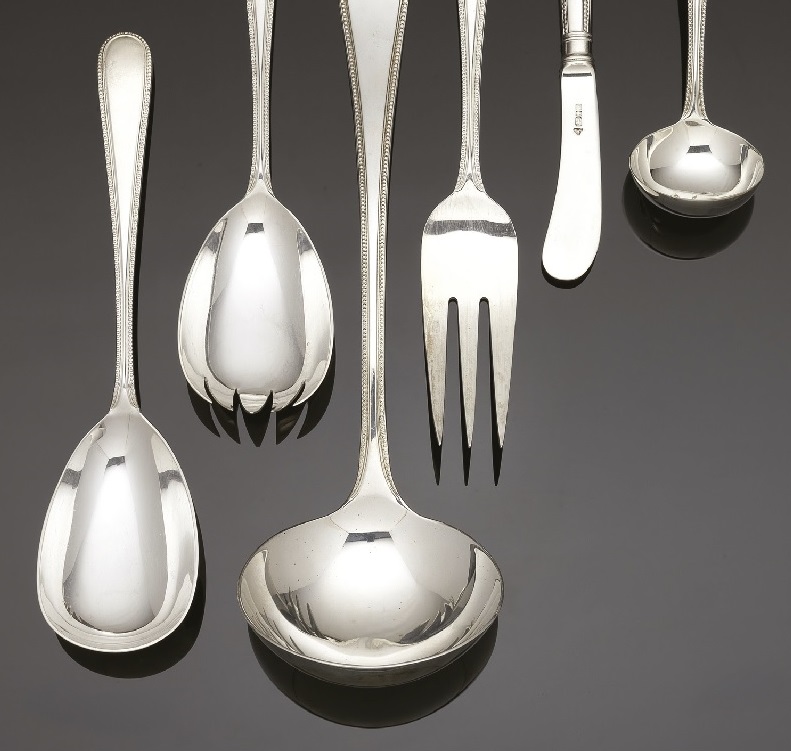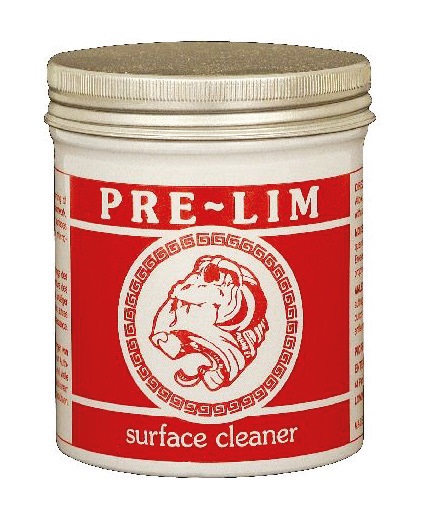How to care for your silver collection
 Understanding silver is half the battle of taking care of it, writes heritage conservator George Monger
Understanding silver is half the battle of taking care of it, writes heritage conservator George Monger
How to care for your silver collection
An essential part of caring for collections and object conservation is the understanding of the materials of which an item is composed.
A material, or object, which may initially appear to be straightforward, may be more complicated. Silver, and objects made from silver, is a good example.
Silver in its pure state is a soft malleable metal, therefore it is usually used in an alloy with copper to provide a degree of hardness to the metal.
Knowing your silver: Sterling V Britannia
There are two grades of silver – sterling silver, an alloy consisting of 92.5 per cent silver and 7.5 per cent copper (although other metals have also been used including zinc, platinum and boron) and Britannia silver, introduced in 1697, and consisting of 95.8 per cent silver and 4.2 per cent copper.
Britannia silver was introduced in 1697 to supersede sterling silver specifically in coins. However, it is significantly softer than sterling silver and, after complaints from silversmiths, sterling silver was re-authorised for use in 1720.
The two types of silver can be differentiated by the hallmark, sterling silver with a lion in a rectangular shape (cut off at the corners) and the Britannia silver marked with a seated Britannia.
Sulpher damage to silver
We must also have some idea how certain materials deteriorate, or otherwise, in normal circumstances.
Of the usual precious metals – silver, gold and platinum – the most vulnerable to degradation is silver; although since the clean air acts and
the concomitant reduction in sulphides from coal fires, the problem of silver degradation has been enormously reduced.
Silver does not react with oxygen in the air at normal conditions, so is unreactive in clean air. But our air often contains low levels of contaminants which can come from any number of sources.
However, there are a number of other sources of sulphides including wool, vulcanised rubber, older paints and textiles which may have been finished with chemicals. These can all cause silver to tarnish.
Hazards of cleaning silver
Obviously, silver can be cleaned and polished, but many cleaning products are abrasive and will wear away the silver and/or any decoration. This is why it is important to know the materials in the construction of the object.
 If it is plated, the thin layer of silver may be abraded to reveal the base metal beneath and, if it had been regularly cleaned, there is no knowing how
If it is plated, the thin layer of silver may be abraded to reveal the base metal beneath and, if it had been regularly cleaned, there is no knowing how
thin the plating has become.
There are non-abrasive methods of cleaning silver, including Silver Dip, or a sodium bicarbonate solution from an aluminium foil-lined container. But none of these may be suitable for items not wholly composed of silver.
When cleaning silver, use a fine polishing paste or liquid to reduce abrasion (useful brands include Pre-lim paste). Make sure you use a silversmith’s cloth, which will not contain sulphur.
To reduce the need for frequent cleaning apply Frigilene lacquer (usually by spraying a thin coat) or polish with Renaissance Wax – a brand of microcrystalline wax polish.
Apart from applying the surface with a barrier of either lacquer or wax, items can be stored in bags made with silvercloth or a microclimate filtration material, which can also be used to line drawers or display cases.
 Silver in display cases, storage cupboards or drawers, can also be protected using Zerust anti-tarnish vapour capsules (one capsule will provide protection for a volume of approximately one cubic metre for a year).
Silver in display cases, storage cupboards or drawers, can also be protected using Zerust anti-tarnish vapour capsules (one capsule will provide protection for a volume of approximately one cubic metre for a year).
Makers’ Marks on Silver
Hallmarks, makers’ names and other markings usually provide a clue to a piece’s composition and suggest any necessary care and treatment.
We usually expect silver to be polished to give a lustrous appearance. However, during the latter part of the 19th century and early 20th century,
silversmithing companies such as Elkingtons and A. Edward Jones Ltd in Birmingham produced patinated and coloured silver vases, trays, furniture
fittings, clocks, dishes boxes and jewellery.
Consequently, as with any metal item, it is important to determine how the item should appear, as well as considering the possible surface colouring and patination of the object.
Types of Silver Plating
Plated silver
 Although electroplating silver onto a base metal (usually copper) was developed around 1840 – in order to make items resembling solid silver much cheaper – silver plating was in use many years previously.
Although electroplating silver onto a base metal (usually copper) was developed around 1840 – in order to make items resembling solid silver much cheaper – silver plating was in use many years previously.
Sheffield plate was a technique developed in 1742 by Thomas Boulsover in Sheffield. An ingot of copper (alloyed with a little zinc and lead to improve its rolling qualities) was covered on both top and bottom with a sheet of silver and then fired.
When the silver began to melt, the ingot was removed from the furnace, cooled and then rolled to produce a thin plate which could be used to silver-plate items.
Various methods were used to disguise the pink copper edges such as applying solder, silvered copper wire, or silver thread, attaching separate decorative motives (such as shields) or, in the 1830s, using nickel silver (an alloy of copper, zinc and nickel) as the base metal.
Close-plating
This was used for items such as knife blades, candle snuffers, carriage handles, harness metalwork and buckles from the 14th century. It involves thoroughly cleaning the base metal (usually iron) before dipping it in molten tin.
Silver foil is then applied before being smoothed with hot iron, soldering the two metals together, and burnishing.
Silver leaf
The final method of plating is to apply silver leaf in much the same way as gold leaf. This is most likely to be used as a decorative material, applied to wood, gesso and metals.
George Monger ACR is a conservation expert and consultant for a number of museums and national heritage organisations. If you have a conservation query for him email magazine@accartbooks.com or call him on 01449 677900.
 This article originally appeared in Antique Collecting magazine – subscribe now to get regular expert advice, opinions and articles delivered to your door each month
This article originally appeared in Antique Collecting magazine – subscribe now to get regular expert advice, opinions and articles delivered to your door each month

